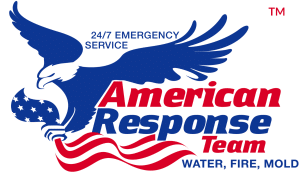Water damage is a common occurrence in San Diego County, and it can have significant implications for homeowners and businesses alike. Whether it’s caused by a burst pipe, a leaky roof, or a natural disaster, water damage can cause extensive damage to property and possessions.
In this article, we’ll explore the insurance implications of water damage in San Diego County. We’ll discuss what types of water damage are covered by insurance, what types of coverage you should have, and what steps you can take to protect yourself in the event of water damage.
Types of Water Damage
Water damage can be caused by a variety of sources, and it’s important to understand the different types of water damage that can occur.
Category 1 Water Damage
Category 1 water damage is caused by clean water sources, such as a broken pipe or a malfunctioning appliance. This type of water damage is relatively easy to clean up, and it’s typically covered by most homeowners’ insurance policies.
Category 2 Water Damage
Category 2 water damage is caused by “gray water,” which is water that has been used for washing or cleaning. This type of water damage can contain harmful contaminants, and it requires special cleanup procedures. Most homeowners’ insurance policies will cover category 2 water damage, but it’s important to check your policy for specific details.
Category 3 Water Damage
Category 3 water damage is caused by “black water,” which is water that contains sewage or other harmful contaminants. This type of water damage is extremely hazardous, and it requires specialized cleanup procedures. Not all homeowners’ insurance policies will cover category 3 water damage, so it’s important to check your policy carefully.
Understanding Your Insurance Coverage
When it comes to water damage, insurance coverage can vary widely depending on your policy and the type of water damage that has occurred.
Homeowners’ Insurance
Most homeowners’ insurance policies will cover water damage caused by a burst pipe, a leaky roof, or other similar events. However, it’s important to check your policy carefully to understand what types of water damage are covered and what your coverage limits are.
Flood Insurance
Flood insurance is a separate type of insurance policy that specifically covers damage caused by flooding. This type of insurance is not typically included in homeowners’ insurance policies, so it’s important to purchase a separate policy if you live in a flood-prone area.
Sewer Backup Coverage
Sewer backup coverage is an optional add-on to homeowners’ insurance policies that specifically covers damage caused by sewage backup. This type of coverage is important if you live in an area with an older sewage system or if you have a basement or other below-ground living space.
What to Do If You Experience Water Damage
If you experience water damage, it’s important to act quickly to minimize the damage and protect your property. Here are some steps you should take if you experience water damage:
- Turn off the water source to prevent further damage.
- Remove any standing water as quickly as possible.
- Contact your insurance company to report the damage.
- Document the damage with photos and videos.
- Keep all receipts and invoices related to the cleanup and repair process.
Conclusion
Water damage can have significant implications for homeowners and businesses in San Diego County. Understanding what types of water damage are covered by insurance and what steps to take in the event of water damage can help you protect your property and minimize your losses.
If you experience water damage, it’s important to act quickly and contact your insurance company as soon as possible. By taking the right steps and working with your insurance company, you can get your property back to its pre-damage state and move on from the water damage.
FAQs
1. What should I do if I experience water damage but I don’t have flood insurance?
If you don’t have flood insurance, your homeowners’ insurance policy may still cover some types of water damage. It’s important to contact your insurance company to understand what types of water damage are covered and what your coverage limits are. You may also want to consider purchasing flood insurance if you live in a flood-prone area.
2. Will my insurance company cover the cost of cleanup and restoration?
Most homeowners’ insurance policies will cover the cost of cleanup and restoration following water damage. However, it’s important to check your policy carefully to understand what is covered and what your coverage limits are. Some policies may require you to use specific cleanup and restoration companies, so it’s important to understand these requirements as well.
3. How long does it take to complete the cleanup and restoration process?
The time it takes to complete the cleanup and restoration process will depend on the extent of the damage and the type of water damage that has occurred. In some cases, the process may take several weeks or even months. Your insurance company and cleanup and restoration company can provide you with a more specific timeline based on the specific circumstances of your situation.
4. What should I do if my insurance claim is denied?
If your insurance claim is denied, it’s important to understand why it was denied and what steps you can take to appeal the decision. You may want to work with a public adjuster or an attorney who can help you navigate the appeals process and negotiate with your insurance company.
5. How can I prevent water damage from occurring in the first place?
There are several steps you can take to prevent water damage from occurring, including:
- Regularly inspecting and maintaining your plumbing, appliances, and roof
- Installing a sump pump in your basement or crawlspace
- Sealing any cracks or gaps in your foundation or walls
- Ensuring proper drainage around your home or business
By taking these preventive measures, you can reduce your risk of experiencing water damage and protect your property and possessions.


